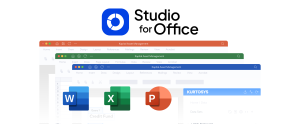The FundForum conference, this year held in the more austere setting of Berlin, always seems to infuse some much needed energy into our industry and provide executives with their annual opportunity to reflect on the challenges ahead and remind themselves how much (little) has been achieved in the year gone by. The main consistency is that years go by quicker but the challenges remain the same.
This year the topics in the day sessions and the conversations in the all-important evening bar session continued to circle around the usual suspects: ETFs, Digitalisation and Robo-Advisory – and a little on how to cut costs and make distribution more effective. The Kurtosys Blog has written many articles on each of these subjects. In this one, I’d like to focus on one specific aspect of “digital”, namely, Digital Factsheets.
The force of digitalisation and that of digital documents has been resisted for many years now. The factors that contribute to this resistance primarily stems around a combination of slow management take-up, lack of priority over “data” initiatives and perceived fear around compliance processes and regulatory expectations. We have long held the view that Digital Documents allow asset managers to overcome and counter all of these industry objections.
It was pleasing to see James Cardew (Marketing Director @Schroders) and Rob Saunders (Marketing Director @AberdeenAssetUK) both comment in FT Ignites Europe this week on the advent of Digital Factsheets and their belief that these will supersede print factsheets over the next few years. We are dancing around our offices here at Kurtosys in response to James and Rob’s views – in our opinion the industry is moving in the right direction.
We have been providing some of our more progressive customers, like Hermes, with digital factsheets which have contributed to significant efficiency savings coupled with some “real” business benefits. First, some “facts” about fund factsheets:
- Factsheets are not regulatory documents; they are marketing documents that need to comply with regulatory guidance.
- Factsheets have historically been produced on a monthly basis (quarterly in the US) sometime between 2-30 days after the month end.
- Factsheets are generally produced by internal home grown systems or by outsourced partners who somehow grind them out into finished PDF documents so they can be printed and disseminated via e-mail, post, websites and displayed in the lobby of the asset manager’s offices.
We believe Digital Factsheets are a no-brainer. But firstly, what is a Digital Factsheet? In our view it captures more than just the ability to produce a PDF automatically from a web browser. We believe “Digital Factsheets” represent a change in the entire process of document production and go as far as to say that it alters our view of sales and marketing in general. Here are some characteristics of the eco-system surrounding Digital Factsheets.
Data
- An approach to data management focused on user experience; this allows marketing teams to aggregate and view “measured” fund data (e.g. performance, risk stats) from various internal sources and/or external data providers like MorningStar, Lipper or Factset.
- An ability to manage fund static data (e.g Security Identifiers, Fee Structure, Registration Status, etc.)
- An ability for the user to manage and customise footnotes, disclaimers, commentaries and translations.
- An ability to capture dynamic data like daily prices.
Publishing
- Marketing and compliance teams are able to review data and check factsheet components prior to publishing and prior to producing any distributed output.
- A mechanism for reviewing and publishing data to multiple channels.
- A page that can be viewed on-the-fly in a web browser when a site visitor views a product page or featured fund page on an asset manager’s or a distributor’s website.
- The site visitor can chose to “print” the factsheet as a high quality PDF or download data into Excel.
Distribution
- Marketing teams have Distribution lists integrated with Marketing Automation and CRM tools, to automatically send links to “factsheets”.
- Site visitors are able to declare themselves (via e-mail address) and access a Preference Centre to set up automated receipt of URLs (to digital factsheets) through e-mail.
- Provide distributors with Digital Factsheet URLs.
We can think of a number of other features in the overall Digital Factsheet eco-system but those above suffice for now. These integral features will be communicated in all subsequent blogs and Kurtosys product releases.
“So What?”
You may be thinking that a lot of the items mentioned above can be achieved with normal, manually produced PDFs. That may be, but here are some real business benefits for you to consider:
- Digital Factsheets mean no more printing. None. The consumer or distributor will do it at their leisure and certainly much less than you would each month. Think of the boxes of factsheets piled up in your print rooms.
- Digital Factsheets can include daily prices. Advisors and Distributors will love you. They can give their end clients something with current data that’s not up to one month old.
- You can manage presentation and data “at the coalface”. This provides marketing flexibility as well as Product Control and Compliance the ability to organise, review and monitor data easily.
- You can distribute far faster and to many channels in one fell swoop.
- You no longer have to worry about the differences between your website and the printed fact sheet. They become the same thing. Same data, same presentation (if you want), same compliance processes.
We were really pleased to see James and Rob comment on the positive impact of Digital Factsheets in our industry. It’s another inch towards reimagining our industry in the shape it needs to be. Kurtosys are helping steer you there.



